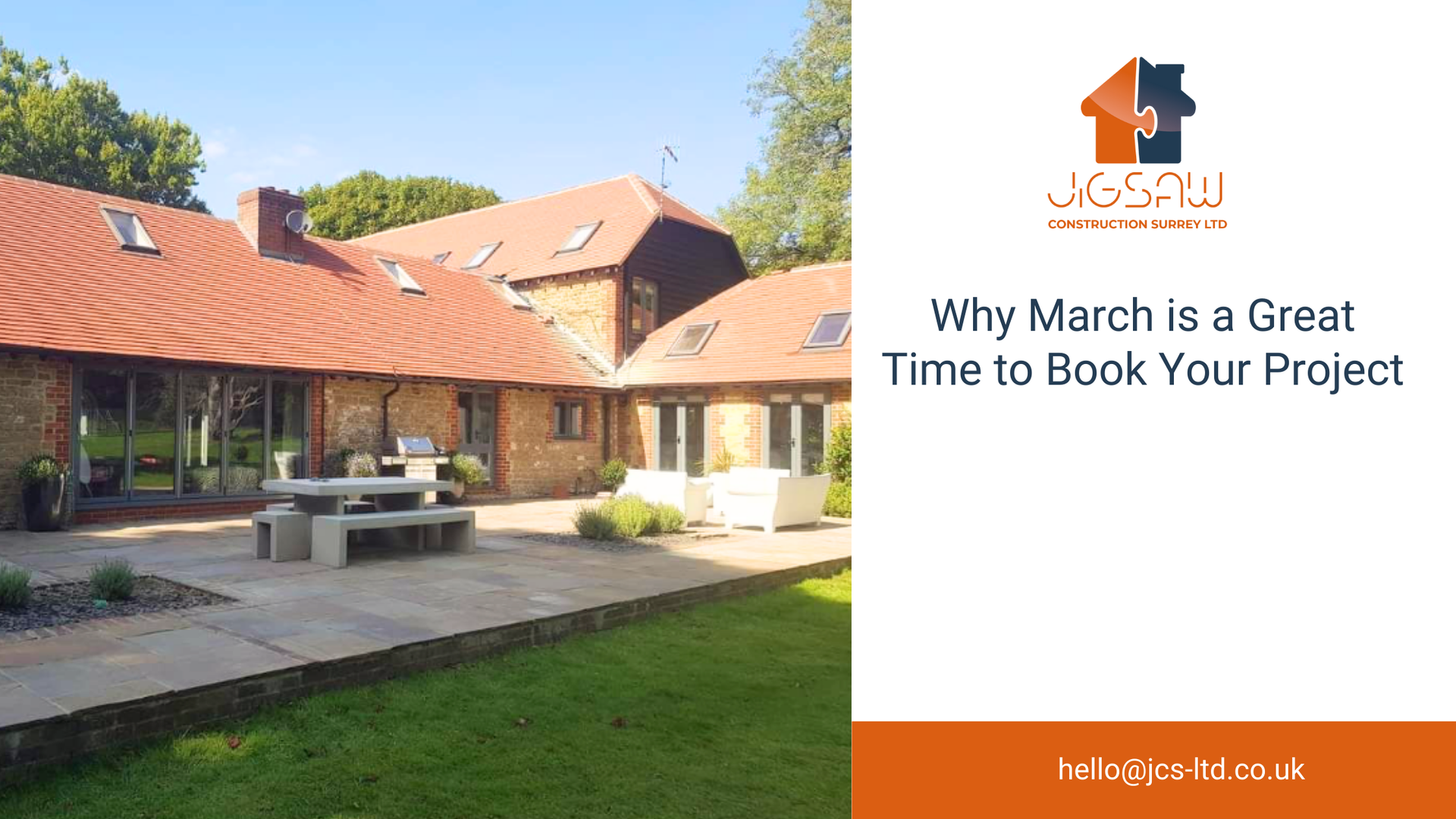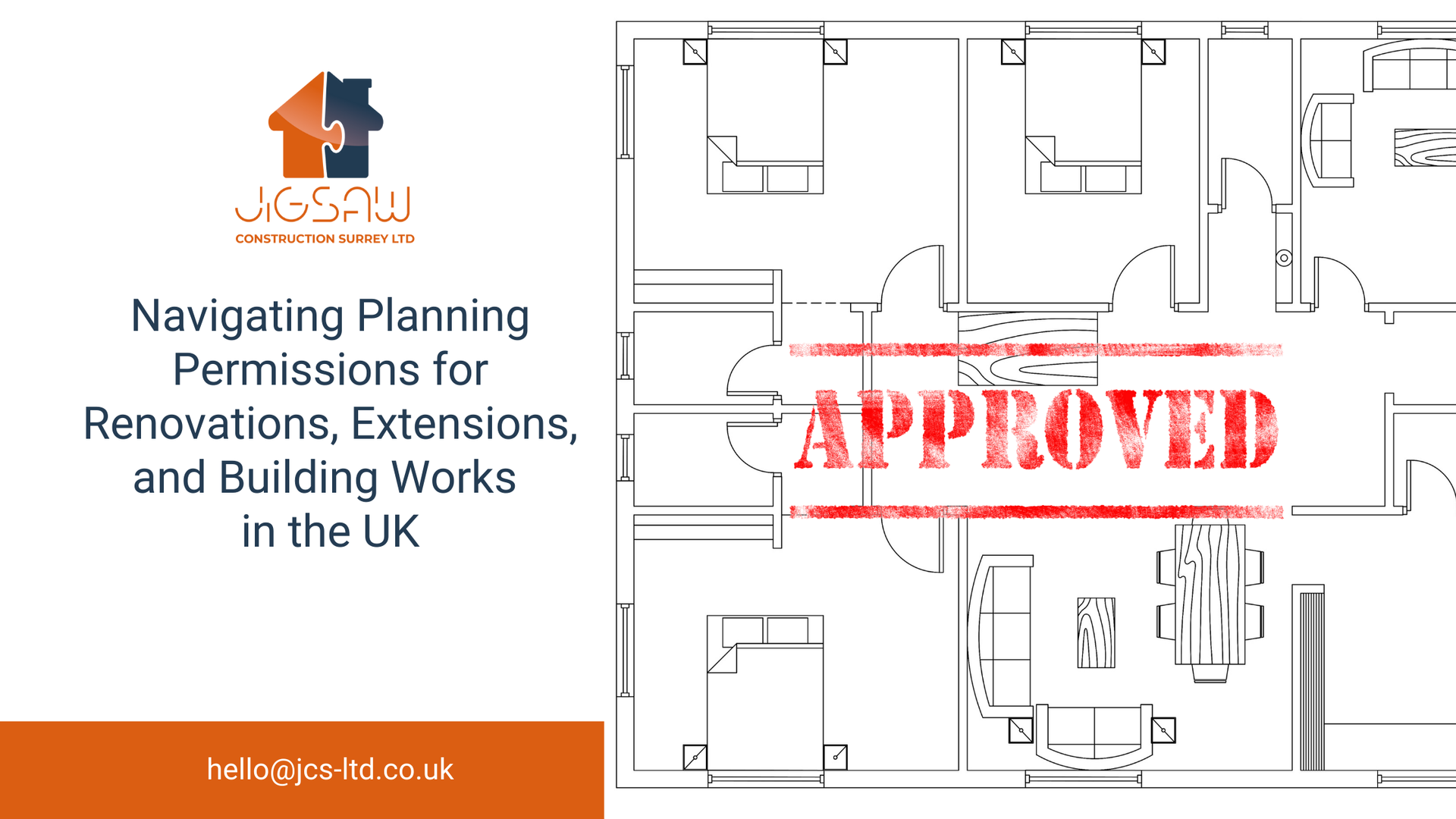
Connect with Jigsaw Construction
Single-Story vs. Double-Story Extensions: Which is Right for You?
At Jigsaw Construction Surrey, we often get asked about the benefits of single or double story extensions. This blog talks about the pros and cons of each.
When to Consider an Extension
When your home starts feeling cramped or you want to add a bit of luxury with extra living space, adding an extension can be a fantastic solution. But one of the major decisions you’ll face is whether to opt for a single-story or double-story extension. Each comes with its unique advantages and drawbacks, and the right choice for you will depend on several key factors, from your budget to your future needs. Here are some of the pros and cons of each:
Single-Story Extensions
A single-story extension is an addition to your home that’s built on one level. These are usually connected to existing living spaces, such as extending the kitchen, dining room, or living room.
Pros of Single-Story Extensions
Single-story extensions typically require less structural work, making them a cost-effective solution for homeowners on a budget. Building a single-story extension often causes less upheaval, especially if the work doesn’t interfere with key areas like bedrooms and bathrooms. If your current foundations are in good shape, you might be able to avoid major (and costly) construction work, further reducing costs and build time. Single-story extensions allow you to create a spacious, open-plan layout that can make your home feel more modern and comfortable.
Cons of Single-Story Extensions
While single-story extensions can add plenty of useful space, they’re limited in terms of how much room they can provide compared to a double-story option.
Depending on where you live, getting approval for a single-story extension may be tricky, particularly in areas with strict building regulations.
Here are some examples of rooms that are commonly built as single-story extensions:
- Kitchen: Expanding your kitchen is a popular choice for many homeowners, as it's a central hub of the home.
- Living room: Adding a living room extension can create a spacious and comfortable area for relaxing and entertaining.
- Bedroom: If you need additional bedrooms, a single-story extension can be a great option.
- Home office: Creating a dedicated home office space can be a valuable addition to your home.
- Playroom: If you have children, a playroom extension can provide a designated space for them to play and learn.
- Conservatory: A conservatory can add a bright and airy space to your home, perfect for relaxing or entertaining.
Double-Story Extensions
If you’re looking to significantly expand your home’s footprint, a double-story extension might be the answer. These extensions add space on two levels, allowing you to create more bedrooms, bathrooms, or living spaces
Pros of Double-Story Extensions
The most obvious advantage of a double-story extension is the extra room you’ll get. Whether you need additional bedrooms, a larger kitchen, or more space for entertaining, a double-story extension can offer significant square footage.
As your family grows, you might find that you need more space for bedrooms, bathrooms, or play areas. A double-story extension can help meet these needs without the need to move to a new home.
Investing in a double-story extension can add substantial value to your home, which is particularly appealing if you’re planning to sell in the future.
Cons of Double-Story Extensions
Double-story extensions require more materials, labour, and planning, which makes them a more expensive option compared to single-story builds. The longer construction time can also cause more disruption to your daily routine.
Building a second floor on your home can be highly disruptive, especially if work involves key living areas such as bedrooms and bathrooms. It may require you to temporarily relocate during some stages of the build.
To support a second story, your home’s foundation may need reinforcement, which adds to both the time and cost of the project.
Here are some common types of rooms that can be built as a double-story extension:
- Bedrooms: Adding extra bedrooms is a popular reason for building a double-story extension.
- En-suite bathrooms: Having a private bathroom attached to a bedroom can be a luxurious addition.
- Dressing rooms: If you have a lot of clothes, a dressing room can be a great way to keep your wardrobe organized and clutter-free.
- Home offices: A dedicated home office can provide a quiet and productive workspace.
- Playrooms: If you have children, a playroom can be a great addition to your home.
- Kitchens: Expanding your kitchen can create a more open and functional space.
- Living rooms: Adding a second living room can provide a separate space for entertaining or relaxing.
Factors to Consider
Before you decide whether a single-story or double-story extension is best for you, it’s essential to consider a few important factors:
- Budget: Single-story extensions are generally less expensive than double-story extensions. If you have a limited budget, a single-story extension might be the best option.
- Planning Permission: It’s important to consult your local planning authority to understand what types of extensions are permitted in your area. In some cases, you may face more restrictions for double-story builds.
- Lifestyle: Think about your family’s current and future needs. Do you need more bedrooms for a growing family? Or are you looking to create a more open, spacious layout? Your lifestyle will play a big role in determining which type of extension is right for you.
- Property Value: If you’re thinking about resale value, it’s worth noting that double-story extensions typically add more value to your property than single-story builds.
The type of room you choose will depend on your specific needs and lifestyle. It's important to consider your family's size, hobbies, and how you want to use the additional space. To discuss your extension, get in touch



